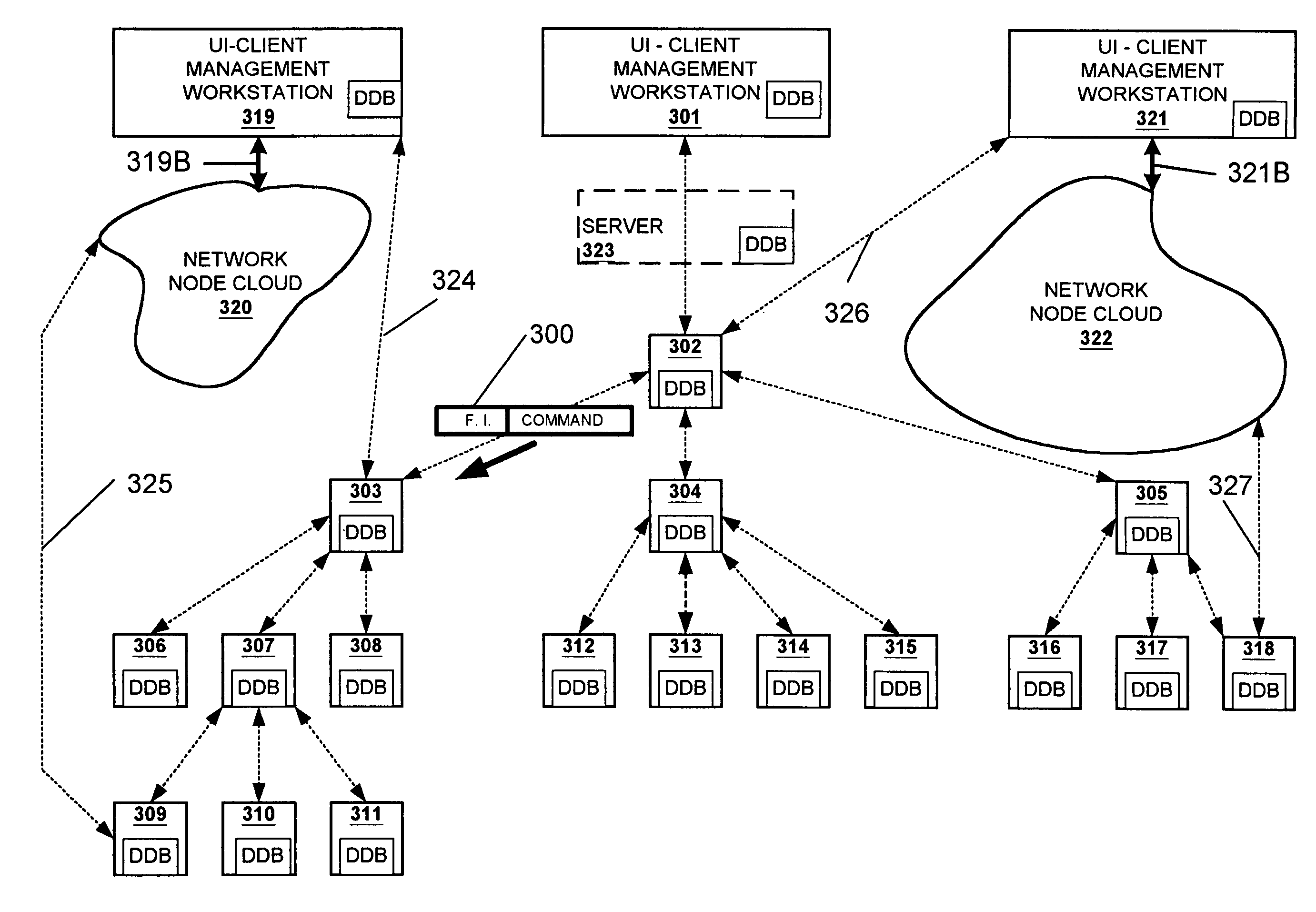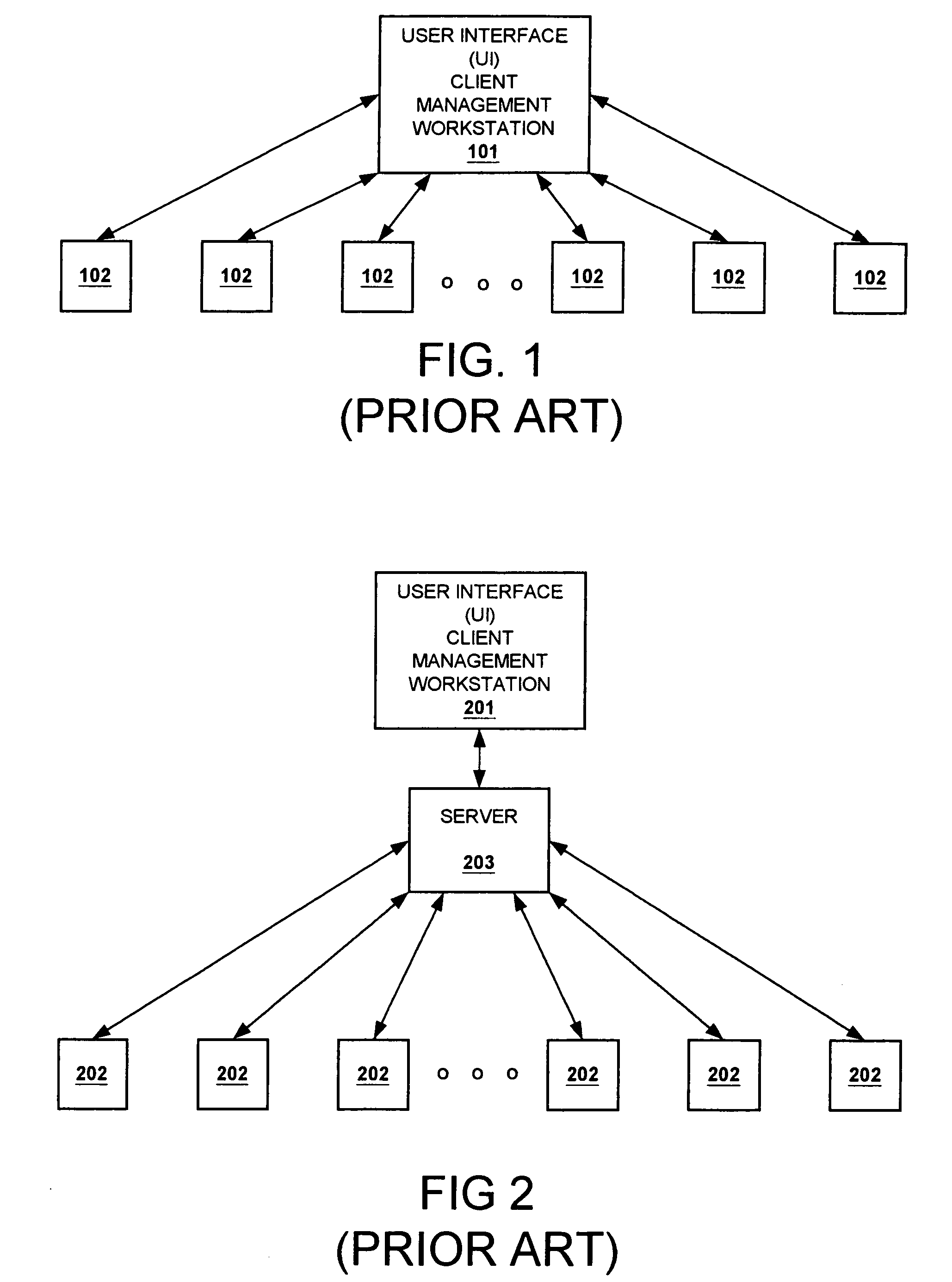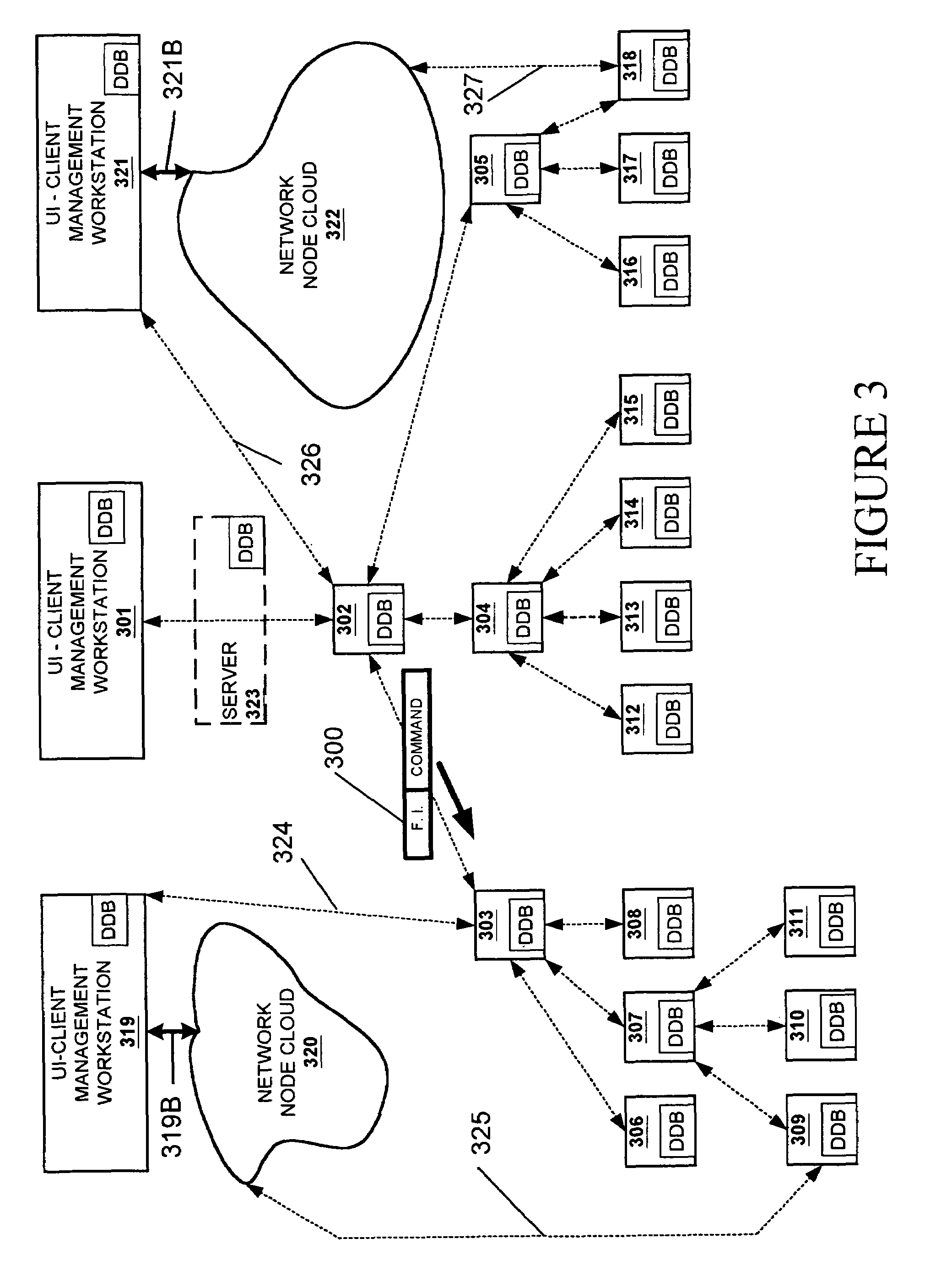Scalable communication within a distributed system using dynamic communication trees
a communication tree and distributed computer technology, applied in the field of distributed computer systems, can solve the problems of deteriorating components, severe draining of client resources, and inability to process other clients, so as to reduce the time for building a dynamic tree, reduce latency and complexity, and save resources
- Summary
- Abstract
- Description
- Claims
- Application Information
AI Technical Summary
Benefits of technology
Problems solved by technology
Method used
Image
Examples
Embodiment Construction
FIG. 3
Dynamic Communication Tree
[0032]Referring to FIG. 3, there is depicted a block diagram of a client-server network having a communication tree configuration of the type which can be utilized by embodiments of the present invention. Client or User Interface (UI) or management work station 301 is shown operatively coupled via dotted-line bidirectional communication paths to nodes or objects or components 302-318 arranged or operatively intercoupled in a tree configuration. These nodes could be, for example, storage systems or Storage Area Network (SANs) and / or objects within one or more of such storage systems or SANs. The bidirectional communication path connecting client 301 with node 302 appears as a dotted-line through dashed-line server 323, the dotted and dashed line representations intending to suggest two things: (1) the dotted-line representation of this communication path (and of all communication paths shown) suggests that it is a dynamic and instantaneous path, where ...
PUM
 Login to View More
Login to View More Abstract
Description
Claims
Application Information
 Login to View More
Login to View More - R&D
- Intellectual Property
- Life Sciences
- Materials
- Tech Scout
- Unparalleled Data Quality
- Higher Quality Content
- 60% Fewer Hallucinations
Browse by: Latest US Patents, China's latest patents, Technical Efficacy Thesaurus, Application Domain, Technology Topic, Popular Technical Reports.
© 2025 PatSnap. All rights reserved.Legal|Privacy policy|Modern Slavery Act Transparency Statement|Sitemap|About US| Contact US: help@patsnap.com



